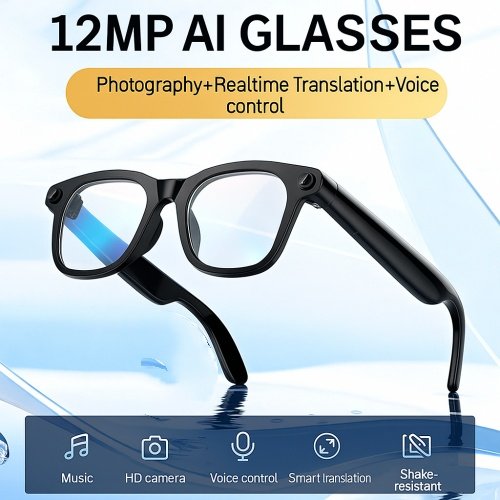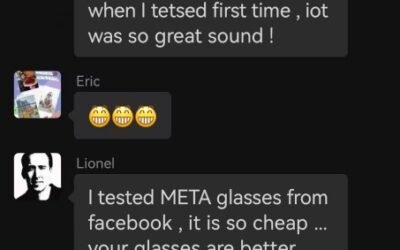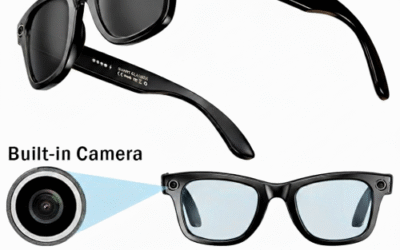How smart eyewear became the surprise hit of 2025 – and the manufacturers making it possible
The Numbers Don’t Lie: AI Glasses Are Going Mainstream
During this year’s Double 11 shopping festival, something remarkable happened in the consumer electronics space. While smartphones and laptops saw modest growth, smart glasses exploded by 2500% year-over-year on Tmall alone.
The breakout performance wasn’t limited to one platform. JD.com reported a 346% surge in smart glasses sales on November 11, making them the fastest-growing category in 3C digital products.
Brands leading this charge included:
- Rokid: 700%+ growth year-over-year
- LeiNiao Innovation: 80%+ growth
- Quark (Alibaba): Topped XR device sales charts within hours of presale
This consumer surge aligns with broader market trends. IDC reported global smart glasses shipments reached 4.065 million units in H1 2025 – a 64.2% increase year-over-year. By 2029, they project shipments will exceed 40 million units, with China leading at a 55.6% compound annual growth rate.
From AR Entertainment to AI Assistant: The Shift Driving Adoption
The current wave represents a fundamental shift in what consumers want from smart glasses.
The AR Era (Pre-2024)
Initially, smart glasses focused primarily on entertainment:
- XREAL’s “head-worn TV” concept
- LeiNiao’s immersive viewing experiences
- Gaming and media consumption applications
The AI Revolution (2024-Present)
The integration of large language models transformed smart glasses into practical assistants:
- Quark S1: Positioned as a “portable super AI assistant”
- Rokid: Translation, object recognition, teleprompting
- Xiaodu: Real-time visual Q&A and knowledge retrieval
Meta’s success with Ray-Ban Meta glasses – surpassing 1 million units after integrating Llama models – demonstrated the market potential. The glasses evolved from basic cameras and audio devices to AI-powered companions that understand and interact with the user’s environment.
Why Now? The Perfect Storm of Technology and Timing
Several factors converged to create this breakthrough moment:
1. Technology Maturation
- Large language models reached sufficient capability for real-world tasks
- Hardware miniaturization enabled all-day wearable comfort
- Battery technology improved to support practical usage
2. Ecosystem Development
Major tech companies recognized AI glasses as the next human-computer interface and began building integrated ecosystems:
- Alibaba: Positioned Quark as its “AI flagship application”
- Baidu: Launched Xiaodu AI Glasses Pro and partnered with DPVR
- Tencent: Collaborated with INMO on application ecosystem
3. Investment Surge
The market response has been dramatic:
- LeiNiao Innovation: Completed 4 funding rounds in one year
- XREAL: Raised ¥200 million
- INMO Technology: Secured ¥150 million
Public markets reacted equally strongly, with AI wearable concept stocks seeing triple-digit percentage gains.
The Manufacturing Challenge: Turning Concept into Comfort
Despite technological excitement, smart glasses face a fundamental adoption hurdle: they must first be good glasses.
Consumer feedback consistently highlights:
- Discomfort during extended wear
- Weight and balance issues
- Short battery life
- Limited water resistance
The industry response has been strategic partnerships between tech companies and traditional eyewear manufacturers:
- Meta acquired 3% of EssilorLuxottica (Ray-Ban’s parent company)
- Doctor’s Optical now provides prescription services for MeiZu, LeiNiao, Rokid, and Huawei
- Traditional brands like Baodao, Baoshida, and BOLON are entering the smart glasses space
ZhuoHao Technology: The OEM Partner Behind the Scenes
As brands race to capitalize on the AI glasses opportunity, experienced manufacturing partners become critical differentiators. ZhuoHao Technology has emerged as a key player in this ecosystem, providing:
✅ Integrated hardware-software solutions that balance AI capabilities with wearable comfort
✅ Mass production expertise to meet surging market demand
✅ Quality assurance for all-day wearable devices
✅ Customization options for brands seeking differentiation
For companies entering the smart glasses market, the right manufacturing partner isn’t just about production capacity – it’s about understanding the delicate balance between technological innovation and user comfort that drives mass adoption.
The Future: Blending AI Utility with AR Immersion
The industry is rapidly converging toward AI + AR integration:
- LeiNiao’s X3 Pro combines advanced imaging with AI interaction
- Quark and Baidu both position their glasses as AI+AR devices
- XREAL partners with Hisense for display and AI model integration
This convergence addresses both practical needs (translation, navigation, information) and entertainment value (gaming, media, immersive experiences).
Conclusion: More Than a Gadget – A New Way of Seeing
The Double 11 sales explosion represents more than just holiday shopping enthusiasm. It signals that AI glasses have reached a tipping point where their utility justifies their presence on our faces.
As these devices become more comfortable, more capable, and more integrated into our daily lives, they may fundamentally change how we interact with information – moving from screens we look at to assistants that see with us.
The companies that succeed will be those that partner with manufacturers who understand both the technology and the human factors – because the best AI is useless if nobody wants to wear it.




0 Comments